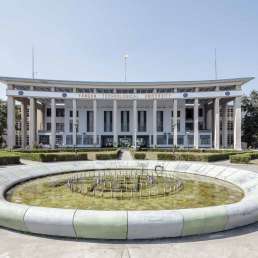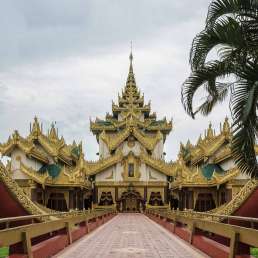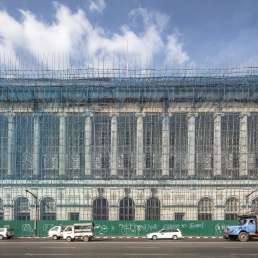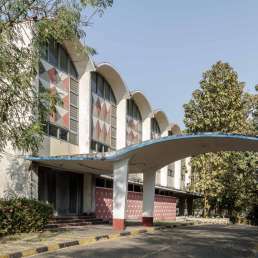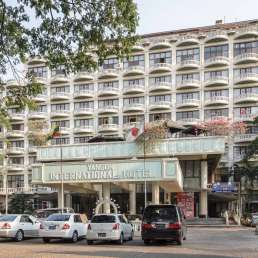Upon assuming power, the State Law and Order Restoration Council (SLORC) tried to rewrite Yangon’s urban geography. The measures had one overall goal: to prevent a repeat of the 1988 anti-government uprisings that almost toppled the military order.
Ne Win’s road to socialism not only led Burma towards international isolation, it ruined the country’s economy. Real economic growth is believed to have been just 1 per cent per year from 1962 to 1988. Neighbouring Thailand, and farther afield, Indonesia and Malaysia, also had authoritarian governments but their economies grew much quicker. The lack of growth had a profound impact on Yangon’s cityscape. Simply put, there was little demand for new buildings and the old ones remained. Yangon did not share the same fate as many East and Southeast Asian metropolises, which began to grow spectacularly during that period. In 1980s Yangon, time was standing still.
But momentous change soon followed. In 1987, the authorities devalued the kyat for the third time, having already done so two years before, in 1985, and previously in 1964. This time, the impact was devastating. It practically demonetised the country and 75 per cent of all banknotes were declared worthless overnight. The ensuing scramble for anything of intrinsic value—and the general distrust of paper money—led to rampant inflation and rice shortages the following year. It was in this climate that protests by students from the Institute of Technology erupted in late 1987, and again in early 1988. By August 1988 the discontent swelled into a mass movement for democracy, shutting the city down for weeks and eventually leading to the military’s brutal crackdown. Hundreds if not thousands died. Many residents of Yangon could recall shocking episodes of bloodshed they witnessed at the time, filling the streets with traumatic memories. One student (now a prominent activist), Khin Ohmar, described a scene near Inya Lake to journalist Benedict Rogers:
“There was blood everywhere. Some people jumped into the lake, some were kicked into the lake. I saw a little boy in his white and green school uniform, maybe eleven or twelve years old, probably in the area by accident, being beaten up and dragged into a truck. I kept screaming. It was like hell.”
The crackdowns had a visual impact on the cityscape itself, with several buildings burnt or otherwise damaged.
As the protests died down, one of SLORC’s first orders to the populace was a large public cleaning initiative “to wash the city with sweat”, picking up trash and covering buildings with a new lick of paint. Journalist Bertil Lintner shares this colourful, so to speak, anecdote about the decree:
The army was soon seen cleaning the capital’s shabby streets and painting houses everywhere. The SLORC set a deadline for private buildings as well; all houses had to be painted before the end of the year, or power and water would be cut. People had to use whatever paint they could find—white, green, red, blue and pink—and Rangoon soon looked like a patchwork quilt. A joke doing the rounds in Rangoon had a man waiting alone at a bus stop who kept pacing back and forth. Asked why, he replied: ‘If I stand still, someone might paint me.’
Yangon’s municipal body, the Yangon City Development Committee (YCDC), was founded by the SLORC regime in 1990. It is responsible for urban planning, the city’s limits, taxation and foreign economic relations. The top echelons of the city’s administration, including the position of mayor, are staffed with senior army officials; however, the nine members of the committee were appointed in (controversial) elections for the first time in December 2014.
“Some estimates put the number of relocated inhabitants (both forced and unforced) at up to 500,000”
After 1988, SLORC formulated an “Urban Works Programme” as a direct response to the unrest. It was so sweeping and ambitious that UN Habitat, in one of its early assessments, called it internationally unprecedented. Whether the authorities implemented every aspect is another question—but the vision was to transform Yangon, erase the trace of 1988 and, in the regime’s eye, remove the conditions that made the uprisings possible.
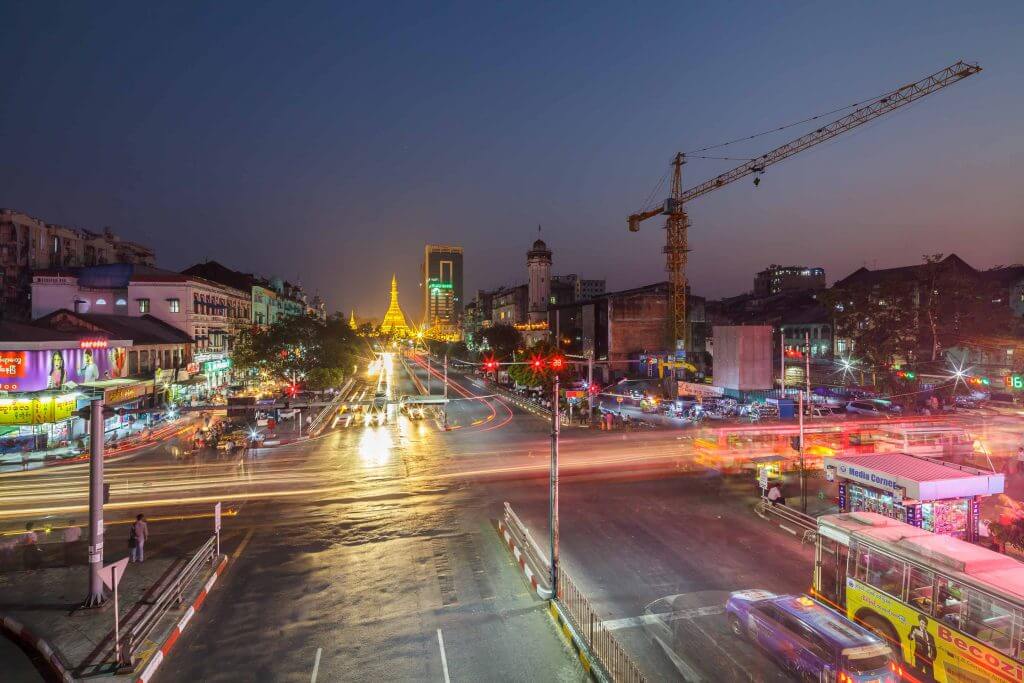
A huge—and hugely controversial—part of the programme involved forced evictions and relocations, moving droves of people away from the centre to 10 newly created townships in Yangon’s outskirts. Some estimates put the number of relocated inhabitants (both forced and unforced) at up to 500,000, or about 20 per cent of the city’s population at the time. The stated intention was to modernise the way people lived. Indeed, many of those relocated had previously lived in slum-like dwellings around the city’s monastic complexes. But often there was no infrastructure in these new environs. People were physically and economically cut off from the city centre. That they were, for a large part, from areas that saw massive protests was no coincidence. Middle-class communities were also singled out for eviction, often because they had sheltered protesters.
Under the pretence of infrastructure investments, Yangon’s downtown streets were widened and the width of pavements reduced. The most notable example is Lower Pansodan. Here even the wide porticos of old colonial buildings disappeared. Large thoroughfares such as Bogyoke Road and Sule Pagoda Road were divided down the middle by fences to prevent jaywalking. Instead, pedestrian overpasses were built. Critics deemed these changes to be crowd-control measures: indeed, it is harder to demonstrate if there are no pavements and when crossing the street becomes physically impossible. It is also easier for the military to shoot into the crowd from the comfort of a pedestrian bridge.
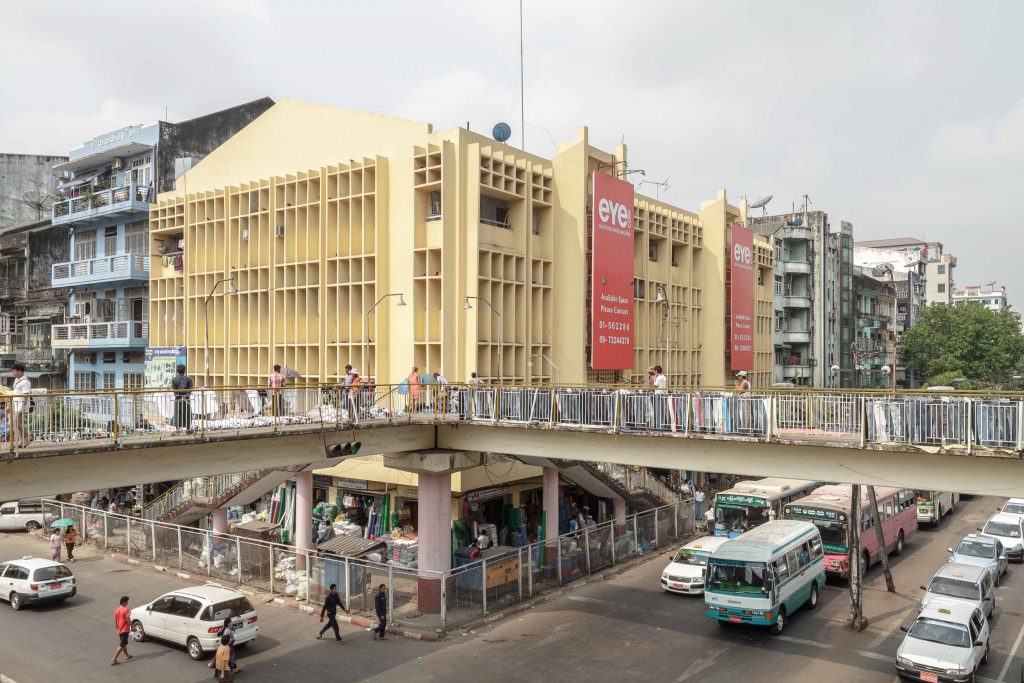
The new Dagon University was created in 1993, far from the city centre and separate from the city, preventing students from mixing with the general population. Meanwhile, Yangon University became close to deserted, as it could no longer offer undergraduate degrees.
“The brutal crackdown on the demonstrators caused international outcry and led to (mainly Western) sanctions”
The junta closed down many spaces connected to the days of nationalist struggle, should anyone try to use them subversively—the Martyrs’ Mausoleum being just one example. Meanwhile, efforts to mould a new Myanmar identity as a tool of nation-building culminated in projects of varying eccentricity, such as the National Museum of Myanmar, the Drugs Elimination Museum and the National Races Village outside Yangon.
The brutal crackdown on the demonstrators caused international outcry and led to (mainly Western) sanctions. Their effectiveness has always been contested. Some of the country’s most important trading partners, especially China, Thailand and Singapore, continued to do business openly with the regime. Japan, too, remained an uneasy partner of the military junta. Public and private money from these countries was invested into construction projects in Yangon. These feature extensively in this very book and—on the surface at least—defy the idea that Myanmar was “isolated” in the 1990s. The junta became ever more dependent on foreign direct investment into the extractive industries, chiefly oil and gas as well as timber and jade. While these business deals created a wealthy and well-connected class of oligarchs, they failed to spur broad-based economic growth. Liberal economic policies only went so far as the inward-looking, at times paranoid junta would allow.
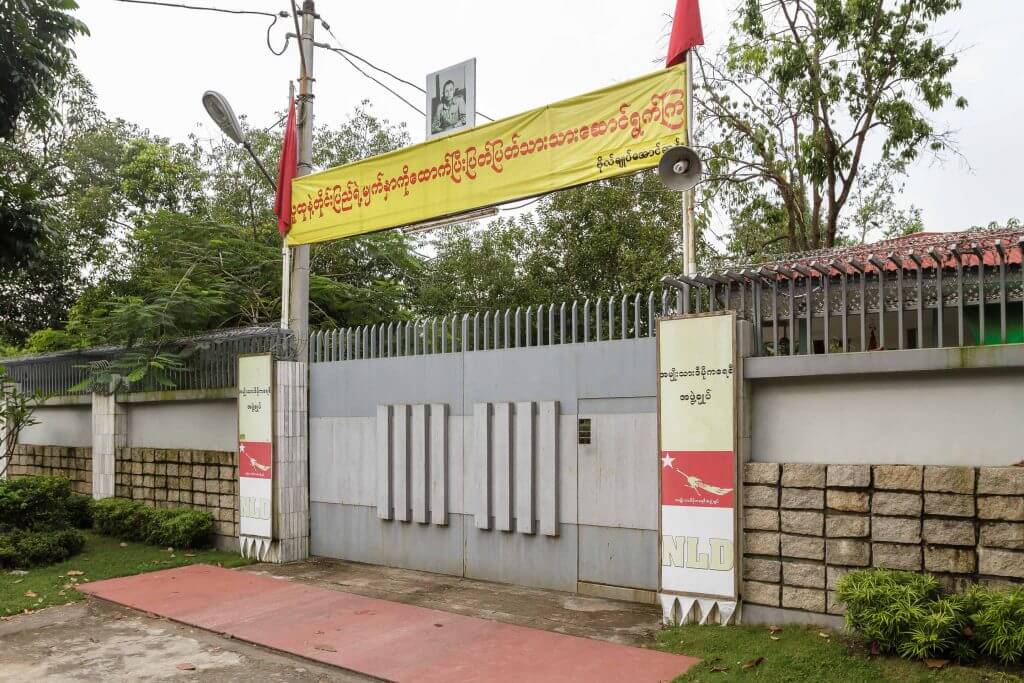
That, too, had its impact on Yangon’s cityscape. There was no large middle class. Most of the population could barely make ends meet. At the same time, sanctions increased the scope for kickbacks. A parallel exchange rate, import licences and other restrictions on trade led to windfalls for a tiny minority of super-rich cronies. For visitors to Yangon in the 1990s and early 2000s, one visible manifestation of this was the scarcity of modern cars on the streets.
One of the most profound changes to Yangon occurred when the junta unveiled a brand new and purpose-built capital, Naypyidaw, in 2005. Although Yangon was and remains the undisputed commercial heart of Myanmar, the city was never central to the ancient Burmese kingdoms that formed the backbone of the generals’ new narrative. The 1988 democracy protests further alienated the regime from their capital, and the major urban transformation programme never really put the junta leaders’ minds at rest. (With good reason, as the 2007 Saffron Revolution went on to show.) The move to the Burmese heartland (or hinterland, if you prefer) cost the country billions of US dollars and explains the sorry state of many of Yangon’s downtown heritage buildings, which were left vacant by the government. The move also explains Yangon’s lack of public works from the early 2000s onwards.
The post-1988 era also led to a deterioration of public policy. The seeds were sown when Ne Win nationalised the education system, in effect sinking the standards of higher education. (See Yangon University for more details.) The large-scale and forced resettlement of hundreds of thousands of skilled ethnic Indian and Chinese inhabitants led to a glaring shortage of human capital. Finally, misguided economic policies drove many of the country’s brightest minds abroad. Post-1988, the junta proved incapable of addressing these problems. Worse still, the army became so intertwined with the running of the country that obedience and military hierarchy practically replaced merit and critical thinking in the corridors of power. As yet, this problem remains.
Further reading:
Seekins, Donald, “The State and the City: 1988 and the Transformation of Rangoon.” Pacific Affairs 78.2 (2005): 257-275.
UN Habitat. Human Settlements Sector Review: Union of Myanmar. 1991.
Rogers, Benedict. Burma: A Nation at the Crossroads. Random House, 2012.
Lintner, Bertil. Outrage: Burma’s Struggle for Democracy. Weatherhill, 1995.
